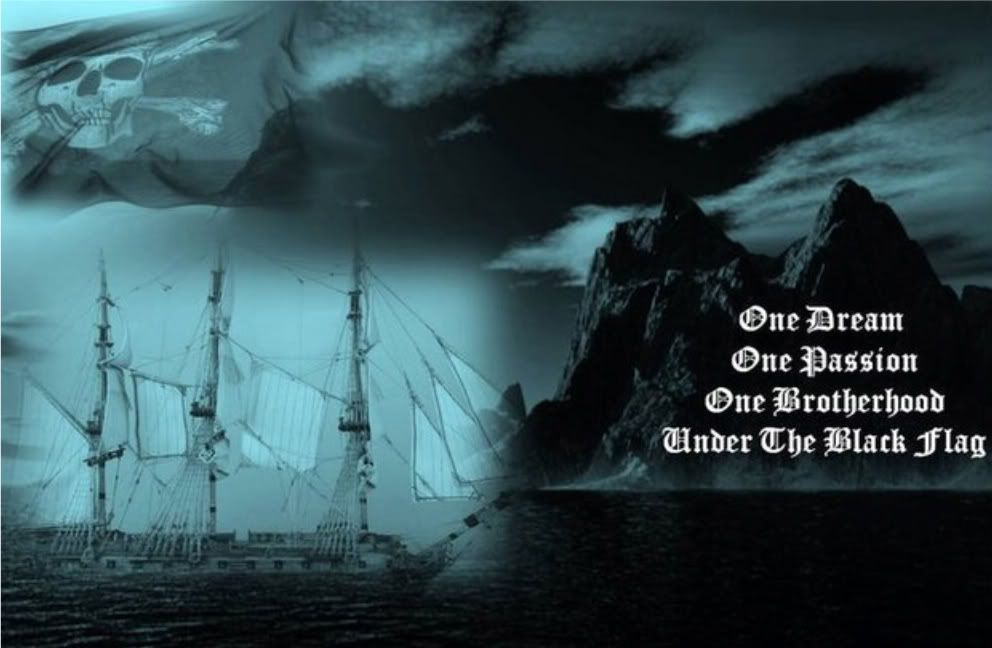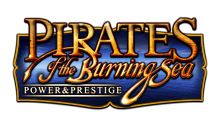Robert Surcouf
biographies, Captain Robert Surcouf 11:30 μ.μ.Robert Surcouf (1773-1827) was a famous French Privateer. During his lengendary career, he captured 47 ships and was renowned for his gallantry and chivalry, earning the nickname of Roi des Corsaires ("King of Privateers").
Surcouf was born in December 1773 in Saint-Malo, a fortified town in Britanny, traditionally a corsaire stronghold. He attended a religious school and was educated by the Jesuits. At 13, he escaped his professors and stole a small craft to prove his ability to sail; he was subsequently caught in a tempest and had to be rescued.
At age 15, he enlisted on a merchantman to India. Between 1789 and 1791, he participated in slave trade between Mozambique and Madagascar. In 1792 he came back to Saint-Malo and discovered the politcal changes France had undergone in the wake of the French Revolution. He sailed to Isle de France (present-day Mauritius) in August on a commercial brig, and was informed on his arrival of the outbreak of war against Britain. Isle de France was threatened by two vessels (54-gun and 60-gun) commanded by Commodore Osborn. Surcouf was made a second officer of the frigate Cybèle, which, with another frigate and a brig, and with less than half their firepower, engaged and repelled the attackers. Surcouf was one of the heroes of the day.
He was made a captain in Isle de France, and expressed his ambition to wage corsair warfare against England. However, the Convention frowned at privateers, and it was difficult to obtain a letter of marque.
On the 3rd of June 1794, Surcouf sailed with the 4-gun ship La Créole, with a complement of 30 men, with orders to bring rice to Mauritius, and encountered three English ships escorted by the 26-gun Triton; he used a technicality to engage combat in self-defence, by not flying his colours until the English ships requested them by firing a warning shot (a naval convention of the time), which Surcouf later reported to consider an agression. After a brief gunnery exchange, the British ships lowered their flag and were brought back to Mauritius, with their cargo of rice and mais. Surcouf was welcomed as a saviour in the famished Port Louis. The capture was declared legal, but the in absence of a letter of marque, the authorities retained the entire cargo (a portion of which normally goes to the corsair).
Following a dispute with the governor of Isle de France, Surcouf sailed to France to receive his letter of marque. He returned to sea in Nantes in August 1798, as captain of the 18-gun Clarisse, with 105 men. He captured four ships in the South Atlantic, and two others near Sumatra in February 1799. On the 11th of November, the 20-gun Auspicious was captured, with a cargo worth in excess of one million francs. Surcouf later had to flee before the 56-gun frigate Sybille, throwing eight guns overboard to out-sail the British warship. He catpured a British brig and an American merchantman before returning to Isle de France.
capture of the Kent by the Confiance
On the 13th of April 1801, though chased by British warships, he arrived in La Rochelle. He settled in Saint-Malo, married, and spent six years in retirement, as a businessman.
In 1803, at the breaking of the Treaty of Amiens, First Consul Napoleon Bonaparte personally offered him the title of captain and command of a frigate squadron in the India Ocean. Surcouf, however, refused, for two reasons: first, he would not have been allowed to operate as independently as he desired; and second, he believed that the war against England should be waged with economic means (i.e. by attacking its merchant navy) rather than direct naval assault. His arguments did not fall on deaf ears; in 1805, Napoleon chose a blockade against England rather than direct confrontation, and allowed privateers to operate with relative impunity. Surcouf left in good terms, and was made officer of the Légion d'Honneur on the 18th of July 1804.
In 1804, Surcouf went into business as ship-owner, and equipped 14 privateers in the Indian Ocean (among them his brother Nicolas Surcouf and his cousin Joseph Potier). Their achievements, however, were somewhat less impressive than Surcouf's own: four of the corsairs were captured by British warships, and 5 campaigns turned a deficit.
In 1807, a British vessel captured Nicolas Surcouf. On the 2nd of March, Surcouf returned to sea on a specially-built three-mast, the 20-gun Revenant. Le Revenant was constructed under special directives by Surcouf himself, with a completely coppered hull, and a remarkable (for the time) top speed of 12 knots. Surcouf arrived at Isle de France in June, defeating the British blockade and capturing several ships on the journey. During the subsequent campaign, which was to be his last, Surcouf captured 16 British ships, partly because British ships tended to lower their flag as soon as they identified their opponent. He returned to Isle de France on the 31st of February 1808. He then decided to stay on the island, leaving the campaign to his second-in-command (and cousin) Joseph Potier. In two campaigns, the latter captured about 20 ships, including the large 34-gun Portuguese Conceçao.
The governor of Isle de France, General Charles Decaen, seized the Revenant for the defense of the island. After a heated argument with Decaen, Surcouf acquired the frigate La Sémillante, renamed it Le Charles, and sailed it back to France. In the meantime, Decaen had confiscated all Surcouf's possessions in the Indian Ocean. In October 1808, the Revenant (renamed Iena), was captured by a British warship. She would be re-taken two years later by the frigate Bellone, under captain Duperré.
On the 4th of February 1809, Le Charles arrived in France with a 8-million franc cargo. Surcouf was received by Napoleon and made Baron d'Empire, and his possessions were returned to him.
In January 1814, Surcouf was made a colonel in the National Guard of Saint-Malo. However, he took no part in the Hundred Days as a chief of Legion. After the war, he returned to Saint-Malo, rich and with the title of baron, and became a merchant ship-owner, establishing business with Terre-Neuve, the Caribbean, Africa and the Indian Ocean.
In 1817, he fought against twelve Prussian officers with a cue stick because they had insulted an old man in a bar; he managed to hold them long enough to challenge them all to duels. He subsequently defeated eleven of the officers, one by one, leaving the last and youngest alive "to tell the tale".
He died on the 8th of July 1827, and was carried to his grave by sea on a flotilla of over 50 sailboats













